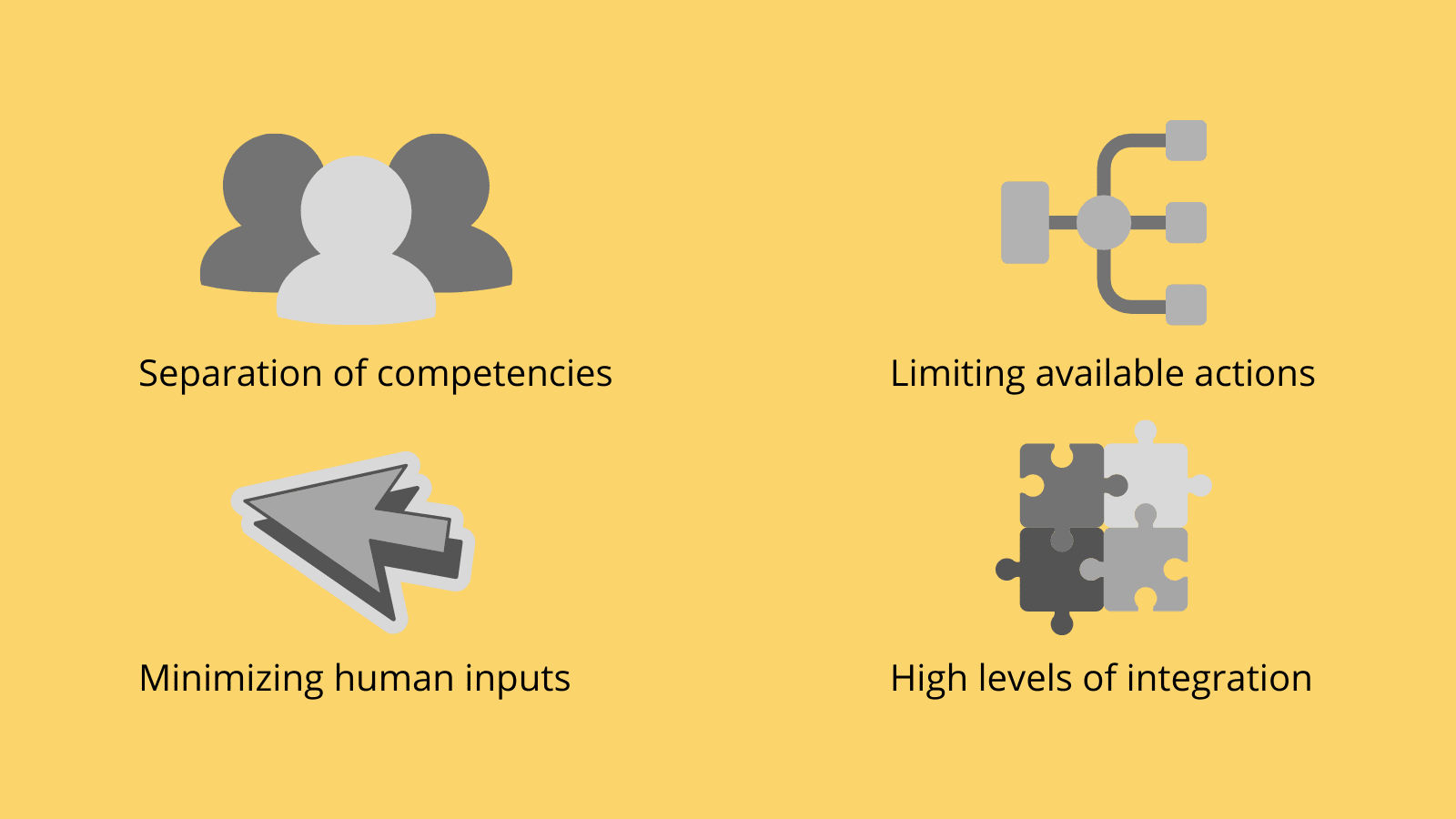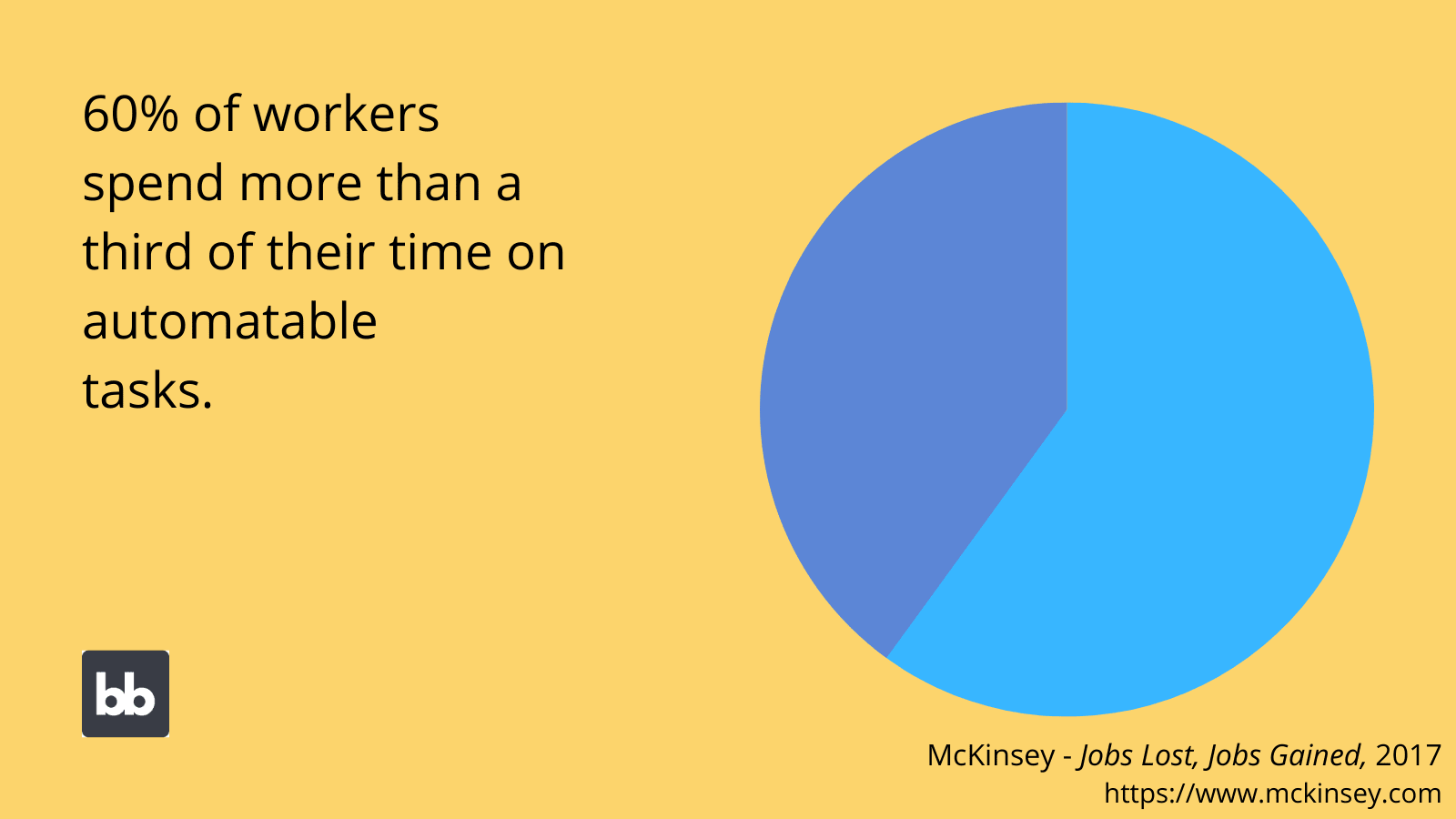What is Workflow Analysis? 5-Step Guide
Workflow analysis is an essential element of any transformation, improvement, or optimization project. A thorough understanding of how your workflows function and the value they provide is the first step to all kinds of operational improvements.
As such, it’s crucial to get this step right.
Despite this, it’s all too common for businesses to jump straight into playing with shiny new automation tools, without a proper understanding of what they’d like to achieve.
Today, we’re going to outline the exact steps you can follow to analyze your workflows. We’ll also take a look at how you can take action off the back of this.
First, though, let’s start with the basics.
What is workflow analysis?
Workflow analysis is the process of breaking down your business operations into their constituent task, to assess their performance and look for inefficiencies, bottlenecks, and opportunities to eliminate manual processes.
Analysis is conducted at two levels:
- The effectiveness of the workflow as a whole.
- Each individual task that makes up the workflow.
The goal here is to gain a thorough understanding of how your workflows operate in practice.
More specifically, you want to assess:
- The rules that govern your workflows.
- How users interact with different tools.
- Process adherence.
- Potential problems
- The time and labor required to complete tasks.
- Incidence of errors, delays, miscommunications, and roadblocks.
- Any fringe cases, or scenarios that aren’t accounted for.
Across each of these, you’re ultimately trying to determine if your workflows are as sleek, robust, and cost-effective as they can be.
Why analyze your workflows?
There are countless scenarios where workflow analysis is vital. We can essentially break these into two categories:
- Analyzing the suitability of your workflows, when implemented as intended.
- Assessing how employees carry out their tasks in the real world.
More often though, you’ll want to carry out these two kinds of analysis simultaneously.
To understand the importance of workflow analysis, we can take a step back and think about the concrete benefits that effective workflows bring.
These include:
- Increased productivity.
- Improving efficiency.
- Better employee satisfaction.
- High levels of oversight, security, and accountability.
- Reduced labor costs.
- Improved compliance.
In other words, robust workflows empower your employees to get more, higher-quality work done, in less time and with fewer resources.
What does an effective workflow look like?
But what are the more specific characteristics of an effective workflow?
There are a few key principles that it’s important to be aware of. These are:
- Separation of competencies.
- Minimizing time for employees to spend on tasks.
- Limiting the actions available to users at each stage of the workflow.
- High levels of integration between platforms and teams.

Let’s consider each of these in turn.
Separation of competencies means that employees have defined roles within a workflow. In other words, the responsibilities and permissions of each employee should be clearly delineated.
Another way of thinking about minimizing human interactions is that any task that can be automated should be automated. This is a key strategy for maximizing efficiency within your workflows.
Limiting the actions users can take at any given stage of the workflow achieves several things, including:
- Avoiding human error.
- Speeding up daily tasks.
- Improving oversight and accountability.
- Minimizing the need for training.
Finally, integration between platforms and teams is essential for workflows of all kinds. A simple example of this might be basic information sharing across different tools and departments.
Integration minimizes the time and effort required to move resources between different actors within a workflow, creating a massive efficiency boon.
When should you analyze workflows?
In what situations do you need to sit down and analyze a workflow? As we hinted at earlier, one of the key use-cases is at the outset of a transformation, automation, or process improvement project.
The reason for this should be pretty obvious.
That is, to make the most of these, it’s vital to understand where you’re starting from.
But are there other situations where workflow analysis is helpful?
In short - yes.
The reality is that ongoing analysis is an integral part of workflow management. There are a couple of core reasons for this. One is that your needs can evolve over time, so it’s important to ensure that your workflows remain fit for purpose.
Another is that real-world users have a habit of circumventing the systems and rules you put in place. This isn’t necessarily ill-intentioned. Rather, most employees just have a natural tendency to find the easiest way to carry out their daily work.
This presents you with two additional challenges. You need to:
- Close loopholes that allow users to do things they genuinely shouldn’t be able to do.
- Learn lessons from real-world interactions with your workflows for continuous improvement.
How to conduct workflow analysis in 5 steps
Now that we have a firmer understanding of what workflow analysis is and why it matters, we can start to think about the practical steps you need to take to go about this.
With that in mind, here’s our five-step plan for analyzing any kind of workflow.

1. Engage with users
The first step is to gather qualitative data, by engaging with your employees. You might have a high-level idea of how your workflows are performing currently, but it’s important to ground your analysis in the experiences of actual users.
You can go about this in a few different ways, including surveys, focus groups, or simple informal conversations.
You should ideally gather feedback from each group of employees or each level of competence within a given workflow, as these kinds of users may have differing experiences.
In any case, the goal here is the same.
You’re essentially trying to understand the pain points, priorities, and concerns of current users, as well as any positive feedback they might have about your workflows. This gives you an understanding of your processes’ strengths and weaknesses.
This helps you to frame your analysis, as well as providing insights into the kinds of issues that you’ll need to focus on and eventually address with any follow-on actions.

2. Gather quantitative data
After engaging with your employees, it’s time to start gathering the facts.
Specifically, we need to collect data on how our business processes impact the organization more widely. Several key metrics play a role here.
These include:
- Lead times - The time between a workflow or constituent task being initiated and completed.
- Labor hours - The total amount of employees’ time required to complete a task.
- Labor cost - The wages associated with labor hours used.
- Opportunity costs - The financial impact of avoidable tasks preventing your employees from doing more valuable work.
- Human inputs - The number of employees and individual interactions needed to complete a given workflow.
- Indirect costs - Including those stemming from miscommunications, human error, excessive back-and-forth, or other operational issues.
Of course, these are only the general metrics that you’ll need to account for. For more specific workflows, you might have additional qualitative data that you need to gather. For example, in a healthcare setting, you may need to consider how your workflows impact patient outcomes.
The key thing is to be able to quantify each of these things, both for the workflow as a whole and for the individual tasks that it comprises.

3. Analyze data
Once you’ve gathered the data you need, you can begin your analysis.
The first step is to determine the proportion of total costs and other resources associated with each stage in your workflow. This allows you to quickly identify the areas that will offer the most benefit through process improvement.
For example, if you had an invoice approval workflow, and you knew that 70% of the total cost stemmed from sharing information between parties, this would be a clear priority area for any follow-on actions.
Besides this, assigning metrics to each stage of your workflow helps you to understand where inefficiencies lie. In turn, you’ll then be able to think about strategies you can implement to improve on this, as we’ll see later.
In other words, the goal of your data analysis is to use quantifiable metrics to identify the exact points in your workflows where issues occur and improvements can be implemented.
4. Determine business rules
Next, we need to understand and analyze the underlying logic of your workflows. Every process is governed by business rules, whether or not these are actually documented anywhere.
These are the decision points that determine what actions employees should take at different stages of your workflows. Each constituent task should have defined rules which govern what happens next.
These can be based on a range of variables, including previous user actions, system data, environmental factors, and more. The specific attributes you’ll consider naturally depend on the nature of your workflow.
So, for example, say you’re analyzing a simple invoice approval workflow.
Employees can submit invoices, and your finance team can sign off on them, for the payments to be processed. In this case, the main thing we’d need to determine is the rules for whether or not an invoice is approved.
For example, assessing expenses against the employees’ allowance, or confirming that all receipts are properly accounted for.

5. Take action
Once we know what resources are used at each stage of your workflow and which rules govern it, we can start thinking about how we can change this. That is if your resources are being most effectively used to achieve your desired results and how this can be optimized.
We can compare the resources used at each stage, with the complexity of the business rules that govern it.
For example, you might determine that an outsized amount of resources are being allocated to repetitive, automatable tasks. Alternatively, a large number of employees might currently provide input for a task where they’re simply not needed.
These are the kinds of situations where action can be taken to improve workflows.
We’ve also created an in-depth guide to IT process automation .
How to optimize workflows
Thankfully, there are a wide range of strategies that you can use to act on the findings of your workflow analysis. These include operational changes, human resources actions, and a range of digital tools.
Let’s take a look at the main categories to find out more.
Process improvement and policy changes
Firstly, there’s implementing policy changes regarding your workflows. That is, altering the underlying rules themselves to be more efficient, regardless of how they’re enforced.
This could mean eliminating redundant stages, simplifying competencies, or removing employees from tasks where they aren’t required.
The main selling point of policy-level changes is that additional costs for implementing them are minimal. That is, you don’t necessarily need to spend money on new tools or training programs.
As such, it’s generally advisable to seek out areas where you can update your workflows at a policy level, before moving on to the remaining strategies.
Digital transformation
Digital transformation is central to effective workflow management. Still, countless organizations around the world continue to rely on pen and paper, spreadsheets, and ad-hoc calls to get things done.
This is anathema to efficiency.
Digitalizing workflows can mean a range of different things in practice though. This can range from simple improvements and integrations within your existing software stack, to using dedicated workflow management software.
Check out our guide to enterprise workflow automation to find out more about the different tools you can use to digitalize workflows in large organizations.
Process automation
Of course, automation also has a vital role to play in improving your workflows. This means using digital tools to reduce or eliminate the need for repetitive manual interactions within a given task.

The idea is to replicate the kinds of decisions that users need to make in order to complete the task and automatically trigger actions based on these.
So, for example, you might want to automate tasks within a performance review workflow. When a review meeting form is completed, the employee could be automatically notified of the outcome and have their overall record updated to reflect this.
To find out more about how this works in practice, check out our ultimate guide to workflow automation.
Training
Finally, your workflow analysis may simply uncover a need for improved training, either to upskill your employees or refresh their existing knowledge.
In simple terms, you might discover that your users don’t actually know how your workflows are supposed to work. For example, employees might be making decisions that don’t reflect your business rules.
Alternatively, they might understand the rules, but act outside of them anyway.
Often, this means that they don’t understand the underlying logic behind your policies, or can’t see why working outside of them causes problems. For example, if they don’t appreciate the security implications of failing to follow proper processes.
In either case, poor adherence quickly undermines even the most robust workflows.
As such, it’s important that you can quickly identify new training needs, both for individual employees and more widely across your organization.
Workflow optimization from Budibase
Budibase offers a suite of features that are perfect for creating slick, streamlined workflows. Our low-code platform is the ideal tool for quickly building custom applications for a range of internal and customer-facing workflows.
Use intuitive design tools, flexible automations, custom RBAC, external data support, optional self-hosting, and auto-generated CRUD screens to build and optimize workflow management tools.
Budibase is the fast, easy way to build custom apps to improve productivity.
We’ve also created over 50 free, deployment-ready app templates , for everything from inventory management software to customer account portals, to help you get started.
Sign up today to start using Budibase for free.